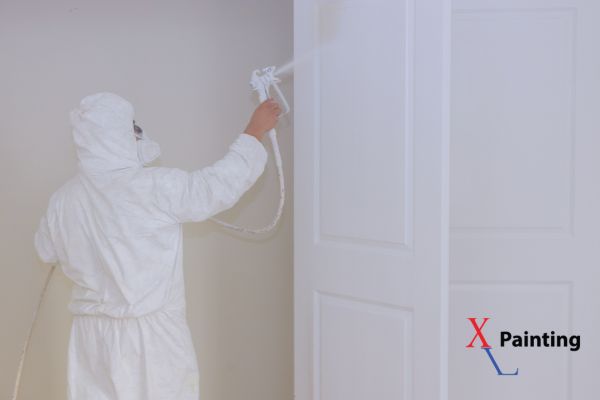
Paint Sprayers: Why They Aren’t as Easy as They Look
Paint sprayers are often advertised as the fastest, smoothest, and most efficient way to paint. With one pull of a trigger, paint seems to glide onto walls like a dream. If you only watch DIY videos, it’s easy to believe that anyone can grab a sprayer and get professional-quality results in one afternoon.
The truth? Paint sprayers are incredibly effective in the hands of a professional, but they can quickly turn into one of the most frustrating tools for an inexperienced painter. From controlling overspray to adjusting pressure and paint flow, sprayers require an understanding of painting science—not just mechanics.
Below, we break down why sprayers aren’t as simple as they appear, and why experience matters whether you’re painting inside your home or tackling an exterior project.
Sprayers for Interior Painting: Looks Simple, Works Complex
When used indoors, paint sprayers can deliver a flawless finish on doors, cabinets, trim, and even large walls. But getting that perfect finish requires one crucial step most DIYers underestimate:
Prep. Prep. Prep.
Before a single drop of paint hits the sprayer, the room must be meticulously masked off. That means:
Covering windows, flooring, fans, and lighting
Masking baseboards, outlets, and door frames
Sealing off adjacent rooms
Removing or protecting furniture
Ventilating without allowing dust to blow in

Even the smallest gap in masking can lead to fine overspray mist settling onto surfaces you never intended to paint, like hardwood floors, appliances, or glass.
Once the prep is complete, operating a sprayer indoors requires technical understanding of:
Tip size
Spray angle
Pressure adjustment
Distance from surface
Speed of movement
Too much pressure or lingering too long in one spot can lead to drips, sagging paint, or uneven sheen, which can’t always be corrected once it dries.
Sprayers for Exterior Painting: The Wind Is the Boss
Using a sprayer outdoors may seem easier since there are fewer tight spaces—but nature adds a whole new level of difficulty. Even a light breeze can carry paint particles far beyond your wall surface.
The Overspray Problem
A slight gust can send paint onto:
Windows & home siding
Roof shingles
Landscaping rocks & concrete
Patio furniture
Neighboring fences, houses, and vehicles

Professional painters know how to work with weather, not against it. That includes understanding:
What temperature paint must be applied at
How humidity affects drying
How wind direction impacts overspray
When to switch from spraying to rolling or brushing
How to thin or thicken paint for proper adhesion
Outdoor spraying also requires knowledge of surface type. Spray application on porous stucco differs greatly from smooth siding or metal surfaces. Without proper technique, paint can flake, peel, or fade much faster.
Why Professional Painter Skill Matters
A quality paint job isn’t just about how it looks the day it’s finished—it’s about how it holds up over time. Professional painters understand:
How to prep surfaces properly
When a sprayer is appropriate
When brushing or rolling will last longer
How to apply paint to minimize waste
How to achieve consistent color and texture
In short, sprayers are a tool—not a shortcut. They work beautifully when used by someone trained to manage them.
Get Professional Results from the Start
If you’re considering painting your home or business, let XL Painting handle the prep, the equipment, and the finish work so you get a smooth, durable result without stress, wasted time, or costly mistakes.
Serving Grand Junction & the Western Slope
⭐ Residential & Commercial Painting
⭐ Licensed & Insured Professionals
⭐ Quality Finishes That Last

